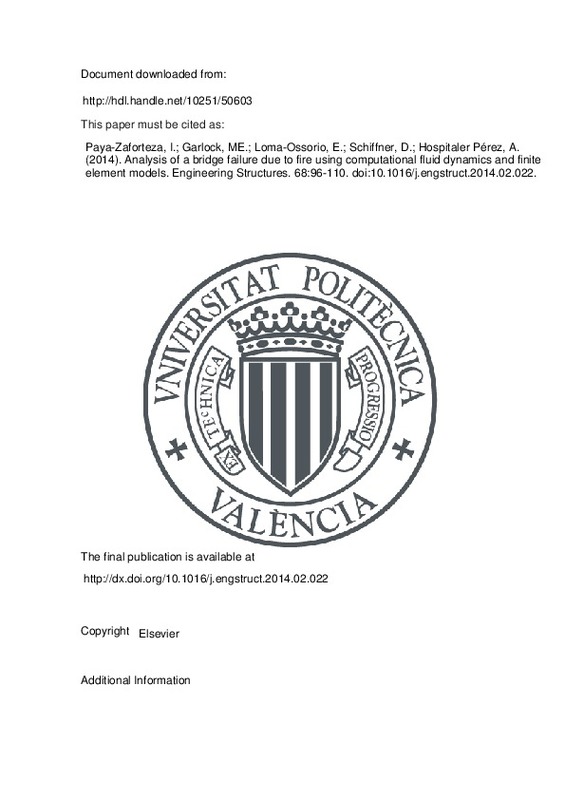JavaScript is disabled for your browser. Some features of this site may not work without it.
Buscar en RiuNet
Listar
Mi cuenta
Estadísticas
Ayuda RiuNet
Admin. UPV
Analysis of a bridge failure due to fire using computational fluid dynamics and finite element models
Mostrar el registro completo del ítem
Alós Moya, J.; Paya-Zaforteza, I.; Garlock, ME.; Loma-Ossorio, E.; Schiffner, D.; Hospitaler Pérez, A. (2014). Analysis of a bridge failure due to fire using computational fluid dynamics and finite element models. Engineering Structures. 68:96-110. https://doi.org/10.1016/j.engstruct.2014.02.022
Por favor, use este identificador para citar o enlazar este ítem: http://hdl.handle.net/10251/50603
Ficheros en el ítem
Metadatos del ítem
| Título: | Analysis of a bridge failure due to fire using computational fluid dynamics and finite element models | |
| Autor: | Alós Moya, José Paya-Zaforteza, Ignacio Garlock, Maria E.M. Loma-Ossorio, Eduardo Schiffner, Daniel | |
| Entidad UPV: |
|
|
| Fecha difusión: |
|
|
| Resumen: |
Bridge fires are a major concern because of the consequences that these kind of events have and because they are a real threat. However, bridge fire response is under researched and not covered in the codes. This paper ...[+]
|
|
| Palabras clave: |
|
|
| Derechos de uso: | Reserva de todos los derechos | |
| Fuente: |
|
|
| DOI: |
|
|
| Editorial: |
|
|
| Versión del editor: | http://dx.doi.org/10.1016/j.engstruct.2014.02.022 | |
| Código del Proyecto: |
|
|
| Agradecimientos: |
Funding for this research has been provided by the Spanish Ministry of Science and Innovation (research project BIA 2011-27104) and the Universitat Politecnica de Valencia (Research and Development Support Program PAID-06-11). ...[+]
|
|
| Tipo: |
|







![[Cerrado]](/themes/UPV/images/candado.png)


